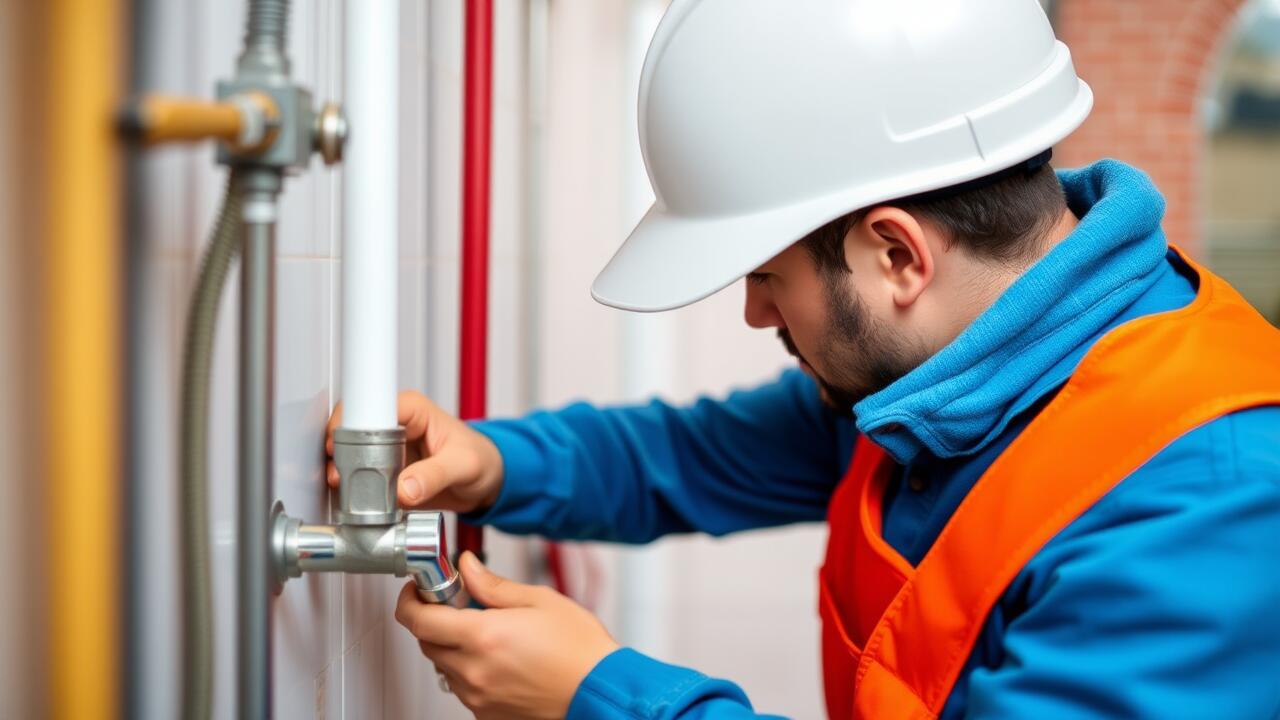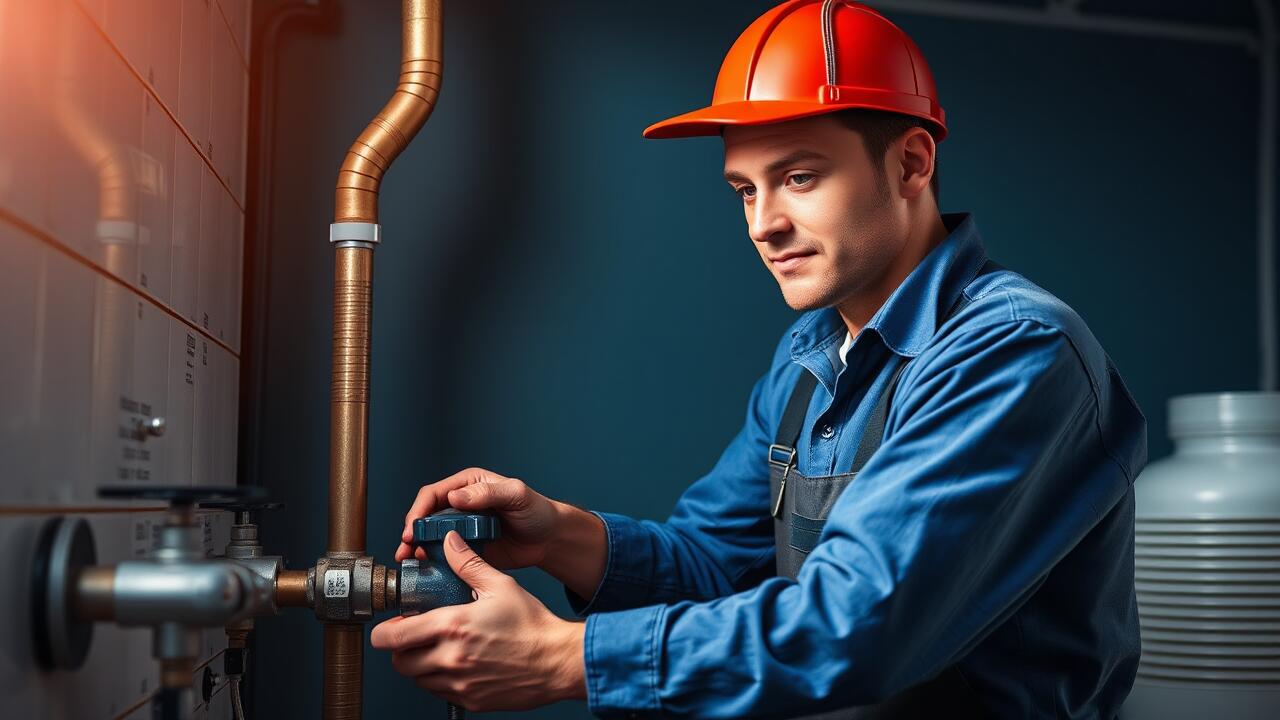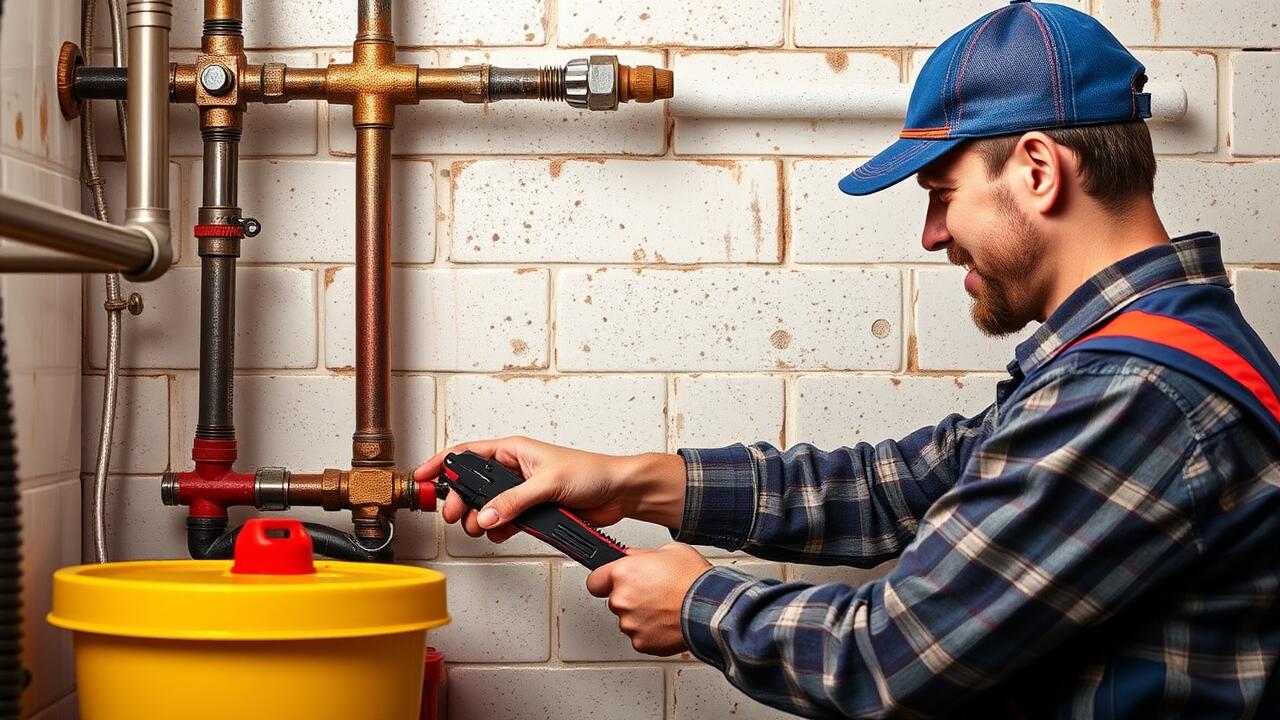
Identifying Water Pressure Issues
Water pressure issues can significantly impact the comfort and functionality of a home. Homeowners may first notice symptoms like inconsistent water flow from faucets or showers. These irregularities often signal that something is amiss within the plumbing system. Early identification is crucial to prevent more serious plumbing problems down the line. If these issues persist, it may be time to search for assistance, using phrases like "Plumbing near me" to find qualified professionals who can diagnose the situation.
Another common sign of water pressure problems involves the presence of strange noises within the plumbing system. Banging pipes, gurgling drains, or frequent water hammering can indicate that pressure levels are higher than they should be. Leaking fixtures or water stains on ceilings and walls also suggest potential overpressure issues. To address these concerns effectively, engaging a plumber who understands your vicinity can ensure that the root cause of the problem is treated, rather than just its symptoms.
Signs Your Home May Have Pressure Problems
Homeowners may notice several signs indicating potential water pressure issues. A noticeable fluctuation in water flow can occur during daily activities, such as showers or using multiple faucets simultaneously. If the water flow is weak when several outlets are running, it might point to an imbalance in pressure. Additionally, strange noises can arise from pipes, such as banging or clanging, often referred to as “water hammer.” These sounds indicate sudden changes in water velocity and may signify underlying pressure problems.
Another sign of pressure issues is inconsistent water temperature, especially in showers. If the water suddenly becomes scalding or cold while someone else is using water elsewhere, the pressure may be too high or too low. Homeowners should also pay attention to leaks or drips around fixtures. These can indicate excessive pressure that overwhelms seals and connections. If you suspect that your home has water pressure issues, looking for “plumbing near me” can help find a professional to assess the problem and recommend appropriate solutions.
Solutions for Regulating Water Pressure
One effective way to manage water pressure in residential plumbing is by installing pressure reducing valves. These valves are specifically designed to lower high incoming water pressure to a more manageable level, ensuring that fixtures and pipes do not experience undue stress. When searching for a professional to assist with installation, using phrases like "Plumbing near me" can direct you to qualified local experts who understand the specific needs of your system. Proper installation of these valves can lead to improved comfort and efficiency throughout the home.
Another important solution for regulating water pressure is ensuring that your home’s plumbing system is free from leaks and blockages. Leaks can lower water pressure and lead to increased utility bills, while blockages can cause pressure fluctuations that may disrupt daily activities. Regular maintenance checks conducted by a trained plumber can help identify these issues early. Again, residents can find skilled assistance by typing "Plumbing near me" into a search engine, leading them to professionals equipped to tackle any underlying problems that could affect overall water pressure.
Installing Pressure Reducing Valves
Pressure reducing valves (PRVs) serve as crucial components in managing residential water pressure. Installing a PRV helps ensure that water pressure remains within a safe range, preventing strain on pipes and fixtures. These valves automatically adjust incoming water pressure, reducing it to a level that is more manageable for household systems. Homeowners often find these devices valuable for improving the efficiency and longevity of plumbing.
Before installation, it's essential to identify the correct placement for the PRV, usually near the main water supply line. Seeking professional help can streamline the process, so searching for "plumbing near me" can connect homeowners to qualified plumbers who understand the specific requirements for integrating a PRV into existing systems. Proper installation and calibration lead to a more comfortable and reliable water supply, enhancing daily activities within the home.
Maintenance of Water Pressure Regulation Systems
Regular maintenance of water pressure regulation systems is essential for ensuring optimal performance and longevity. Homeowners should inspect their pressure reducing valves for any signs of wear or damage. Accumulation of debris can impede function, so cleaning these components is crucial. It’s advisable to check the pressure readings periodically to confirm they remain within the desired range. When issues are detected, timely interventions can prevent more significant plumbing problems down the line.
In addition to routine checks, professional servicing plays a vital role in maintaining these systems. Engaging local plumbing services allows for thorough inspections and necessary adjustments. Many companies offer specialized expertise in water pressure regulation. Homeowners searching for "plumbing near me" can find qualified professionals to perform in-depth evaluations and maintenance. Sustaining proper pressure levels not only enhances comfort but also protects the plumbing infrastructure from damage.
Best Practices for Longevity and Efficiency
Regular maintenance is crucial for ensuring the longevity and efficiency of water pressure regulation systems. Homeowners should perform routine checks on pressure reducing valves, ensuring they are free of debris and functioning correctly. Scheduling professional inspections can identify potential issues before they escalate. Keeping a close eye on water leaks or unusual fluctuations in pressure can help maintain the system's overall health.
When searching for assistance with your plumbing needs, consider looking for “plumbing near me” for local experts who can provide tailored solutions. Proper installation and regular adjustments according to seasonal changes are also important. By taking these steps, you can optimize water flow, reduce energy costs, and prolong the life of your plumbing system.
FAQS
What are the common signs that indicate my home may have water pressure issues?
Common signs of water pressure issues include inconsistent water flow, loud banging noises in the pipes, water spraying from fixtures, and frequent leaks or drips.
How can I determine if my water pressure is too high or too low?
You can measure your water pressure using a pressure gauge, which can be attached to an outdoor spigot or faucet. A normal range is typically between 40 and 60 psi (pounds per square inch).
What is a pressure reducing valve (PRV), and how does it work?
A pressure reducing valve (PRV) is a device installed in your plumbing system that automatically reduces the incoming water pressure to a safe level, preventing damage to pipes and fixtures.
How often should I maintain my water pressure regulation system?
It’s recommended to check and maintain your water pressure regulation system annually to ensure it is functioning correctly and to address any potential issues before they become serious problems.
Can I install a pressure reducing valve myself, or should I hire a professional?
While some homeowners with plumbing experience may choose to install a PRV themselves, it’s generally advisable to hire a licensed plumber to ensure proper installation and compliance with local codes.



